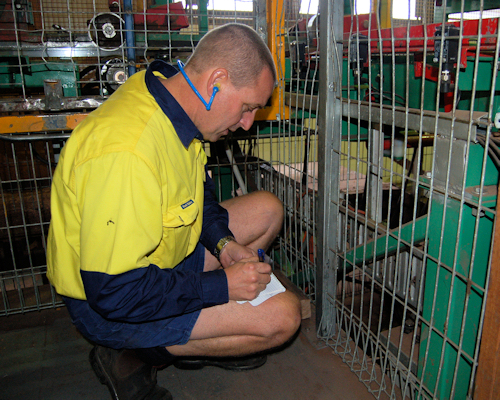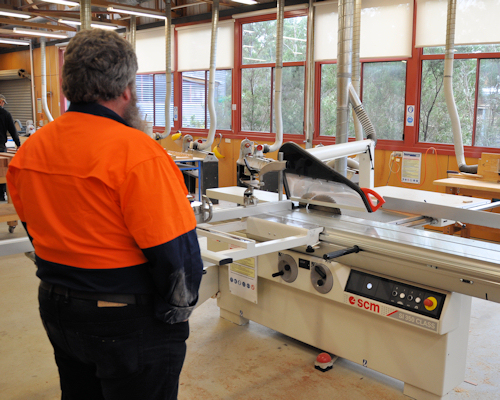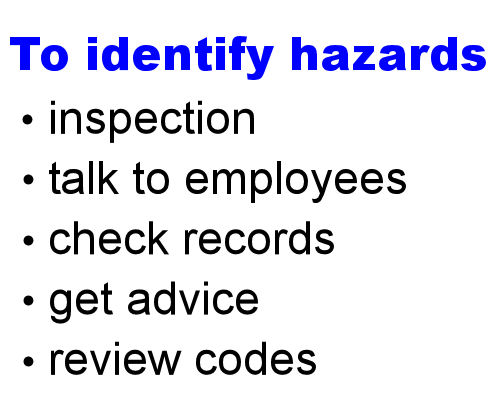Identifying hazards

Learning activity
Audio 4 (mp3 |6|KB)To be effective at identifying hazards, you need to know what sorts of injuries tend to be associated with particular work conditions, or types of machines, or certain sorts of tasks.
Have a look at the statistics table on the link below to see what the most common injuries are in the manufacturing industry, and the main causes of those injuries.
Have you or your work mates ever suffered any of these injuries? Think about the causes and any changes you made afterwards to the way you did your job. Did these changes reduce the chance of the injury happening again?
Share your answers with your trainer and other learners in your group.

 Go to Assessing risks
Go to Assessing risks

